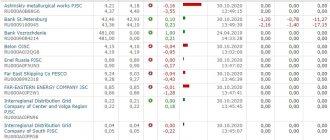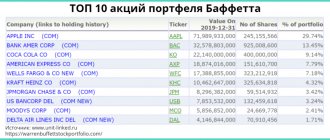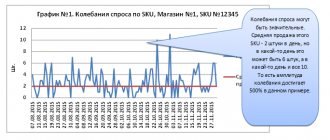An additional issue of shares is one of the ways to raise funds for the development of an enterprise. The procedure is strictly regulated by stock market legislation. The procedure for carrying out an additional issue of shares is prescribed in Art. 19 of Law No. 39-FZ of April 22, 1996 “On the securities market.”
The need to increase the authorized capital may be caused by various reasons. The most common reason is the acquisition of assets that will be used in the activities of the enterprise.
In this article we will analyze the concept and mechanism of additional shares issue: how and in what cases it is carried out, as well as the impact on the income of large and small investors.
What is an additional issue of FPO shares (additional issue)
To understand what an additional share issue is, let’s remember the very concept of an issue. An issue is the release of securities. If a company issues bonds, this is one of the types of lending: the company borrows funds from buyers of securities, pledging to subsequently repurchase the bonds with interest. By placing shares, the company attracts sources of free financing - investor funds. However, it is not entirely free: investors need to pay dividends provided that the company makes a profit at the end of the year.
Primary issue (English IPO - Initial Public Offering - initial public offering) is the process of the initial placement of securities on the stock exchange. Shares can be sold either openly (to everyone) or closed (for a certain circle of people).
An additional issue (FPO – Follow-on Public Offering – next public offering) is the issue of securities in addition to those already available.
For example, the authorized capital of a joint stock company consists of 1000 shares with a par value of 100 rubles. each. Thus, the size of the authorized capital is 100,000 rubles. The Board of Directors decides to increase the authorized capital by 20% through an additional issue. After this, the number of securities will be 1,200, and the size of the authorized capital will be 120,000 rubles.
If a shareholder owns 10 securities, before the procedure his share was 1%. After the additional issue, its share will decrease to 0.833% (10/1200). Of course, this will negatively affect his income and will also likely reduce the market value of the security.
In order to protect the interests of investors, the process of carrying out an additional issue is controlled by the state represented by the Federal Securities Commission (Federal Securities Commission) through an audit, during which the economic justification for the additional issue must be confirmed.
The question immediately arises: is the additional issue of shares good or bad? The answer suggests itself: it’s good for the company, because The procedure will allow you to attract free sources of financing, but for the investor it will be rather bad. Is this so clear? We’ll look into it further.
What is a buyback
The economic term “buyback” or buyback (eng. buy back) means the purchase by the issuer (JSC) of its own shares.
As part of this process, the number of securities decreases, the profit per share and, accordingly, the dividend increases. The result is an increase in capitalization (of shares), and, accordingly, the attractiveness of the issuer.
Most often, a buyback indicates that a company has excess cash. But it can be a necessary measure and is applied when the company’s market price has decreased. The issuer buys back its shares to resolve its own issues, for example:
- to make a profit from investing in your own shares, the price of which is less than the market price;
- to apply benefits when calculating tax on dividends;
- to pay for the acquisition of other companies with purchased shares;
- to transfer them to their own employees;
- to reduce excess liquidity, etc.
All this works for the stabilization and reliability of the issuer. The largest buyback operation is the repurchase of its securities by PJSC Polyus in 2016 (repurchase amount - 261.675 billion rubles). As an example, we can also cite the $3 billion share repurchase program of the oil company, calculated for the period from 09/03/2018 to 12/30/2022.
Procedure for additional issue of shares
Additional issue of shares is a process that takes place in several stages. Let's look at each one separately.
Deciding on additional release
The decision is made in one of the following ways:
- board of directors;
- by holding a general meeting of participants.
The method of making a decision is fixed in the company's charter. Based on the voting results, a protocol is drawn up, which indicates the following parameters:
- number of securities;
- price;
- placement method;
- payment method.
If the decision on an additional issue is made by the board of directors, then the placement price is determined at market value. For these purposes, appraisal companies are involved.
Approval of the decision made
The decision is approved within six months after adoption. At the same time, an issue prospectus is created. This document contains the characteristics of the securities listed above. The preparation of an additional share issue prospectus is mandatory in the following cases:
- open placement;
- closed subscription with more than 500 participants;
- the amount of the additional issue exceeds 50,000 minimum wages.
The decision approved by the board of directors, as well as the issue prospectus, are sent for state registration.
Registration of the solution
The registration of the additional issue prospectus is carried out by the Central Bank within up to one month. It is possible to submit documents electronically and receive an electronic registration mark.
In preparation for registering an additional share issue, a package of documents is collected, including constituent documents, financial statements, certificates from the Federal Tax Service, etc. In order to save time, you can entrust the procedure to specialized organizations, whose employees will fill out all the necessary forms.
Placement of newly issued shares
The placement occurs in this way: existing investors have a pre-emptive right to purchase; in case of refusal, the securities are sold to everyone.
The placement price is determined according to the following criteria:
- not lower than the book value;
- no higher than the price on the secondary market.
These requirements are established to protect the rights of shareholders. To understand how this works, let's return to our example with conditions:
- total number of papers – 1000 pcs.;
- book value of one share – 100 rubles;
- According to the additional issue, 200 shares with a par value of 100 rubles were issued.
So, the par value of the share is 100 rubles. On the market, papers are sold for 600 rubles. The price of the additional issue should be in this range. Suppose the shares were placed at 550 rubles. for each. Then an investor who owns a block of 20% (200 shares), in order to keep his share unchanged as a percentage, must purchase 40 securities at 200 rubles each, which will cost 22,000 rubles:
1200*20%=240 pcs.
(240-200)*550=22000 rub.
If the securities were placed at a price below par, then the meaning of the additional issue would be lost: the authorized capital would then have no sources of financing. If the placement price is higher than the market price, it will be more profitable for existing shareholders to repurchase shares traded on the stock exchange than to purchase them through an additional issue. This will directly lead to speculation, and as a result, the gap between the offering price and the market value will increase.
Registration of a report on an additional release
After the securities are placed, the Central Bank registers the results of the additional issue. Next you should perform a series of procedures:
- Amendments to the charter.
- Announcement of the closure of the additional share issue.
- Reflection of results in accounting: entries for changes in the amount of authorized capital and the status of settlements with the founders.
Amendments to the charter of the issuing company and their registration
Changes to the charter are also registered in accordance with the established procedure. The issuer applies to the registration authority (FTS), which makes changes to the Unified State Register of Legal Entities (USRLE). After this, the issuer receives a new extract from the Unified State Register of Legal Entities, which reflects the changes made to the charter: the size and structure of capital, the composition of the founders.
Prospectus for a security issue
The prospectus for a security is the main document in the issuance process. It is undergoing state registration. It indicates information about the company, the type of instrument, its denomination, the term for bonds, and so on.
The package of documents also includes financial statements, including a balance sheet, profit and loss statement, information about the purpose of the issue, the company’s prospects, information about personnel, shareholders, affiliates, etc.
It is worth noting that when placement is carried out on the stock exchange, the platforms add their own requirements to state standards, which consist of mandatory disclosure of certain information and general business transparency.
How does the additional issue affect the price of shares?
Since the additional issue of shares leads to an increase in their quantity, the supply accordingly increases, causing the price to fall.
Thus, the additional issue of shares of the company leads to a decrease in quotes on the stock exchange. There are two reasons - an increase in supply and a decrease in the yield per security.
The additional issue has the most negative impact on small shareholders. In this regard, the process is controlled by the state.
Money issue
Money issuance is carried out by the Central Bank of the Russian Federation through its cash settlement centers in different regions of the country. For this purpose, revolving cash desks and reserve funds are opened in the RCC. Minting of coins and physical printing of banknotes is carried out at specialized enterprises - OJSC Goznak, the Moscow and St. Petersburg mints, and in special printing houses. There are three forms of money emission: - deposit - the Central Bank of the Russian Federation increases its credit investments by issuing loans that increase account balances; - budgetary - release of funds to cover the state budget deficit through the acquisition of government securities by the central bank; - banknote issue of money - issue of banknotes and coins.
Legislative regulation
- The decision to conduct an additional share issue is made by the board of directors or the general meeting of shareholders.
- Existing shareholders have a preemptive right to purchase.
- The placement price should be above the face value and slightly below the market value.
- The issuer's obligation to pay dividends on preferred shares issued under an additional issue remains regardless of the financial results of the company.
These norms are contained in the Laws:
- 208-FZ of December 26, 1995 “On joint stock companies” (latest edition);
- 39-FZ of April 22, 1996 “On the securities market” (as amended).
For what purposes is an additional issue of shares carried out?
The most obvious purpose of an additional issue of shares is to obtain “free” money for further business development. What does "free" mean? This means that the money received from the sale of additionally issued shares does not have to be subsequently returned to anyone and no interest has to be paid on it (as, for example, when issuing bonds or when taking out a loan).
Sometimes there is an urgent need for money (to modernize production, expand activities, etc.). At the same time, banks are not always ready to provide a loan or agree to do so, but on rather unfavorable terms. In this case, in order to stay afloat, there is often no other option but to issue additional shares.
Often an additional issue is carried out against the backdrop of a revaluation of the company's shares (when the company's market value exceeds its book value). Such revaluation can be diagnosed quite quickly by looking at such basic multipliers as, for example, P/B, P/E.
There are also cases when an additional share issue is carried out in accordance with the requirements of the law. For example, banks are forced to resort to it in cases where the minimum allowable amount of authorized capital for them is increased by law.
And finally, this procedure is often carried out with the aim of consolidating the authorized capital and concentrating the management of the company in the hands of a group of majority shareholders. According to the letter of the law, each shareholder has a preemptive right to repurchase newly issued shares according to the share that he currently owns. Most of the share capital is diluted between a huge number of small shareholders, and not all of them will exercise their right to purchase additional shares. This is what gives the majority shareholders the opportunity to buy them out, thereby increasing their shares in the company.
What does an additional issue of shares lead to?
Let us formulate the consequences of the additional share issue in the table. Positive changes are highlighted in green, negative changes in red:
| For the issuer | For large shareholders | For small shareholders (without voting rights) |
| Raising funds | Dilution of shares in the authorized capital | |
| Increase the authorized capital | Decline in earnings per share | |
| Fall in market value of securities | Opportunity to purchase securities at a price below the market | |
| Decrease in investment attractiveness | Have the opportunity to influence the process by setting the placement price | They have no ability to influence the price |
Investment risks, violations of shareholder rights, reduction in the value of investments
The main risks are somehow related to the price of shares. It can be market and emission. The difference between them is as follows:
1. The issue price is set at the time of issue, first placement. It is displayed in the share certificate; it may not coincide with the nominal value, but should not be less than it. The shareholder buys it for the first time, and they begin to sell shares on the stock market.
Important!
The nominal price is the amount of the authorized capital divided by the number of shares. It is set at the formation of the joint-stock company, fixed in the charter, but has no economic significance. The difference between the par value and the issue price is the company's share premium.
2. Market price – the price for selling shares on the secondary market. It is changeable, depends on supply, demand and a number of other factors, and is formed during the trading period. It does not determine a company's profitability, but it does affect the value of other shares held by shareholders.
Each additional issue affects the value of the company's securities in one way or another. It can either raise or lower the importance of investments. Often they try to speculate on this, trying to use the opportunity to reduce the price of shares for mercantile purposes.
Thus, taking advantage of special privileges, the majority shareholders decide to increase the authorized capital and consolidate funds. To do this, they create a certain appearance of the need for an additional issue. Thus, reducing the share of minority shareholders who do not have voting rights, they encourage the sale of shares at a reduced cost. Such risks can be eliminated through the improvement and application of legislation.
What does an additional share issue mean for a private investor?
We have already found out that an additional issue of shares is rather a plus for a large shareholder and a minus for a small one. What should a new investor do who has not previously owned shares of this company and is thinking about buying?
First of all, the obvious should be taken into account: if a company has decided to issue an additional issue, this most likely indicates financial difficulties. And the reason for increasing the authorized capital is not so important - business development or state requirements. If a company attracts funds from outside, it means that at the moment there is not much of its own money.
I would not recommend purchasing securities immediately after placement on the stock exchange. It is known that first you need to calculate earnings per share. To do this, net profit must be divided by the total number of securities. Thanks to this, you will have an approximate idea of how much you are entitled to.
But in order to find out the amount of net profit, you must wait until the financial statements are published. That is, until the beginning of the year following the one in which the additional issue was carried out.
Conditions for the additional issue
Additional release can be carried out if:
- The previous issue has been completed and the issue report has been registered.
- The company properly discloses information about its activities in the public domain. For example, public joint stock companies are required to publish information about material facts on the Federal Resources website.
- The placement of additional shares is provided for by the charter in the form of authorized shares. If there is no such provision in the charter, it can be introduced simultaneously with the decision to issue shares, that is, there is no need to hold two different meetings.
When organizing an additional share issue, one should not forget about respecting the rights of shareholders, especially minority ones. If there is a corporate conflict in a company, errors in the issue procedure can lead to litigation and personal liability of the company's management.
Advantages and disadvantages of an additional share issue
An additional issue of shares is one of the financing methods that has both advantages and disadvantages. How can it be useful?
- Free money that can be used to purchase assets, pay off debts, buy shares in a business, and other purposes.
- An increase in the authorized capital, which may be dictated by both changes in legislation and other needs, for example, improving reporting indicators for investors.
- Influx of new shareholders. With the increase in the number of securities, new persons appear claiming a stake in the company. However, this can also have negative consequences.
Negative consequences include:
- Decrease in the price of shares on the stock exchange: an additional issue interrupts the period of holding shares, as they become cheaper.
- The decision to issue additional shares is often made by the majority of majority shareholders, who pursue their own personal interests, which do not always coincide with the interests of the business.
- The appearance of random persons in the management structure of a joint stock company.
- Costs of issuing and registering additional shares.
- The issuer's obligation to pay dividends on preferred shares continues regardless of whether the company operates at a profit.
An example of an additional share issue and its consequences
In 2010, PJSC Rosseti decided to raise capital through an additional issue of shares. Subsequently, several additional issues were carried out. Let us collect in a table data on how the market value of shares changed as a result of additional issues.
| Denomination, rub. | Total number of securities taking into account additional issues, pcs. | Placement price, rub. | Market value, rub. | |
| Before the additional issue (December 2008) | 1,00 | 41 041 753 984 | — | 1,55 |
| May 2010 | 1,00 | 42 964 067 081 | 4,14 | 4,14 |
| November 2011 | 1,00 | 47 871 694 416 | 3,08 | 2,91 |
| December 2012 | 1,00 | 57 247 302 465 | 2,16 | 1,98 |
| June 2013 | 1,00 | 161 078 853 310 | 2,79 | 1,07 |
| October 2015 | 1,00 | 195 995 579 707 | 1,00 | 0,45 |
As you can see, over 7 years the price of securities has decreased by more than 70%. At the same time, the state owns almost 90% of the shares (data for 2022). Thus, the shares of Rosseti PJSC are not of particular interest to private investors.
Why is the issue of securities carried out?
The issue of securities serves to attract long-term capital to the company. At the same time, the issue of shares is, in essence, the sale of a stake in the enterprise. In this way, co-owners are attracted to the business for the entire life of the company.
From the point of view of enterprises, the issue of securities represents a cheaper, less risky and longer financing alternative compared to loans. At the same time, for investors, the acquisition of company securities provides the opportunity to obtain higher returns compared to deposits in commercial banks.










